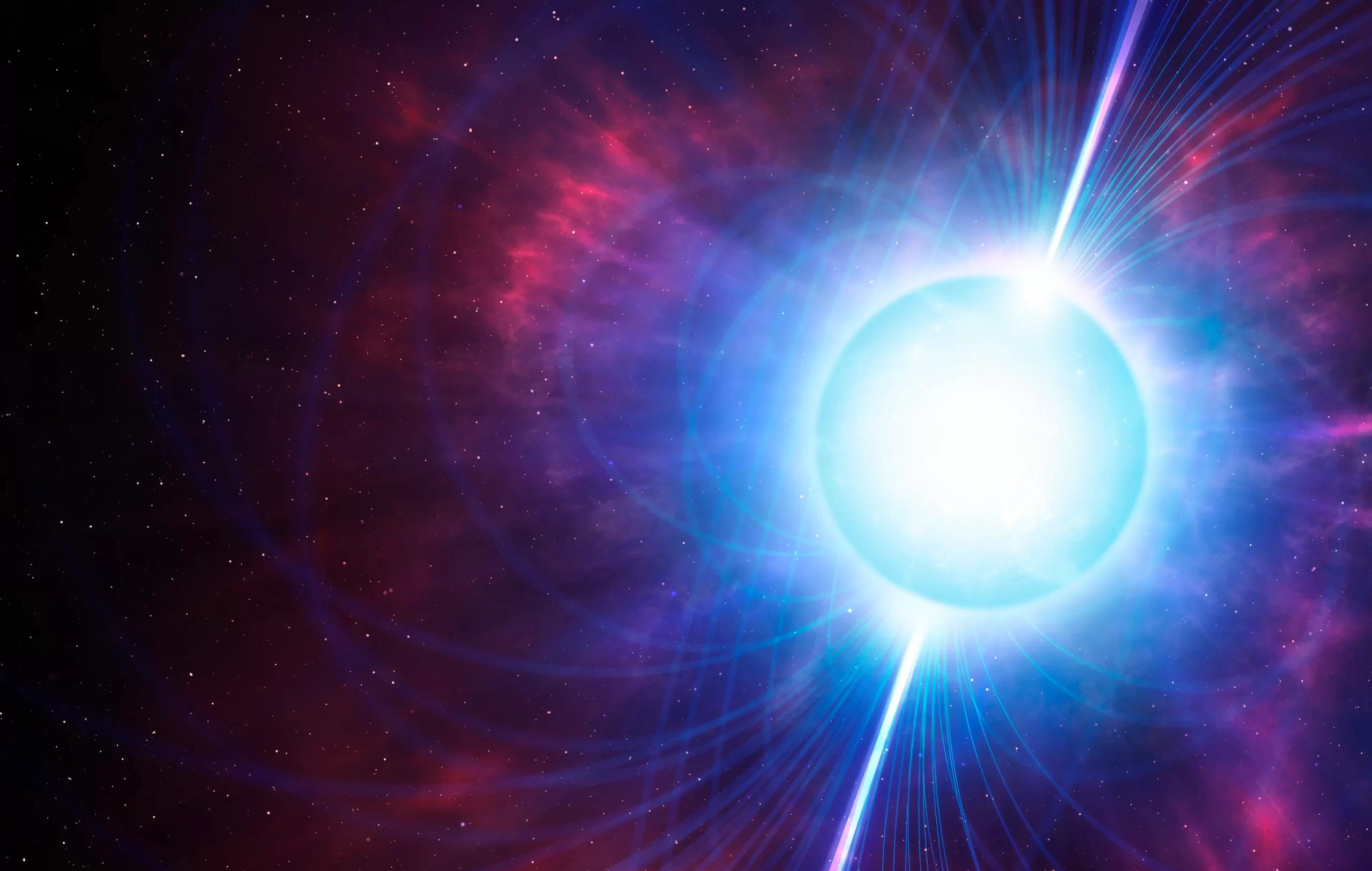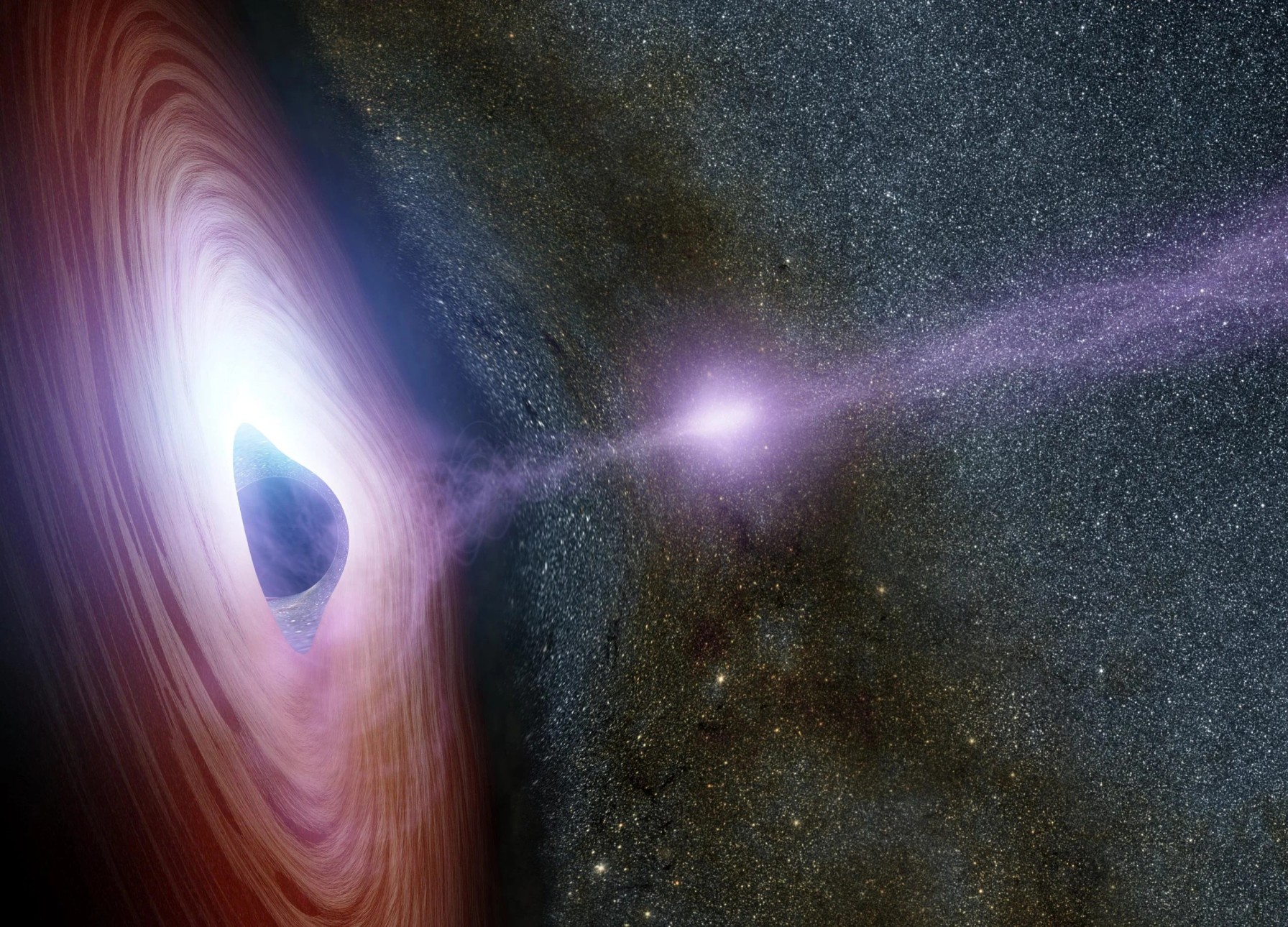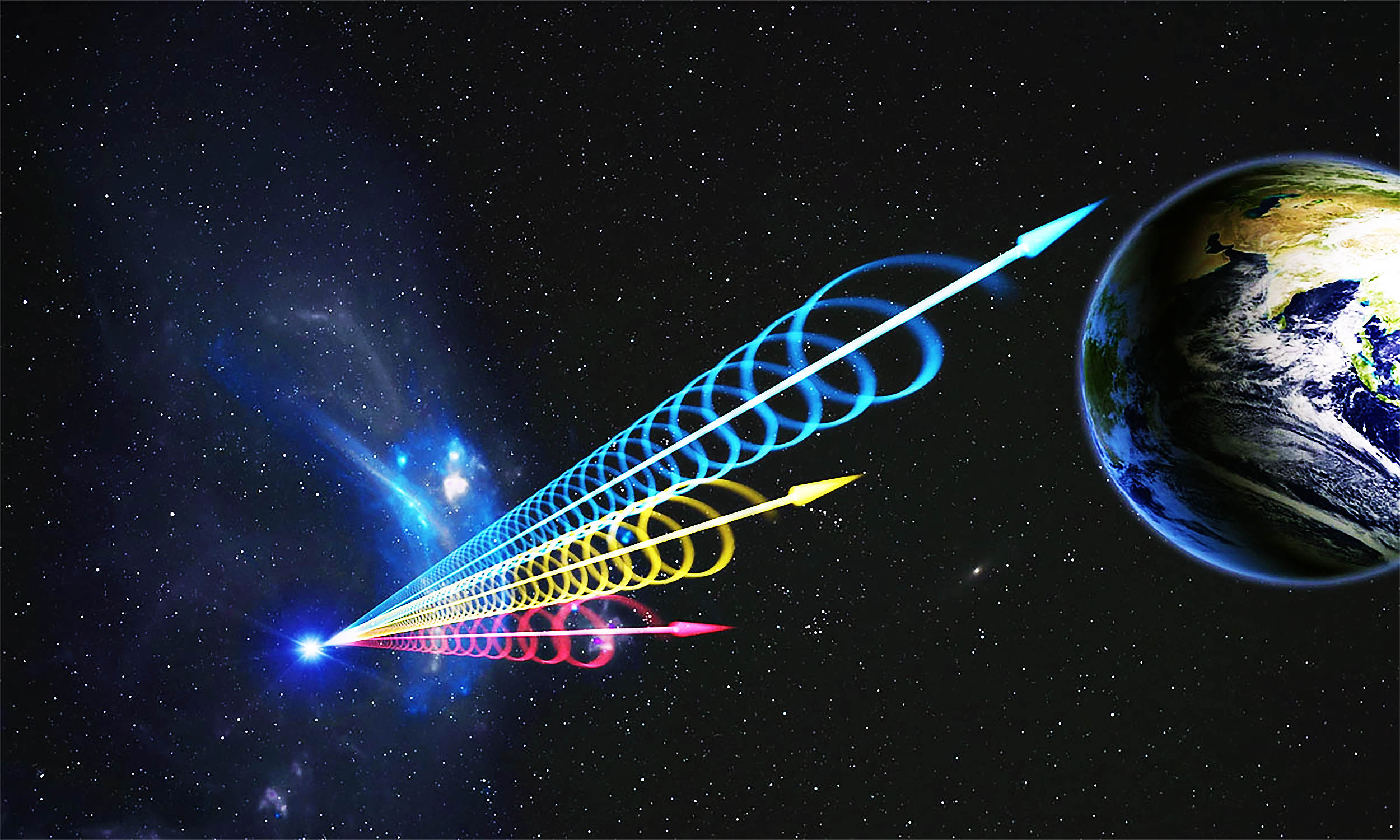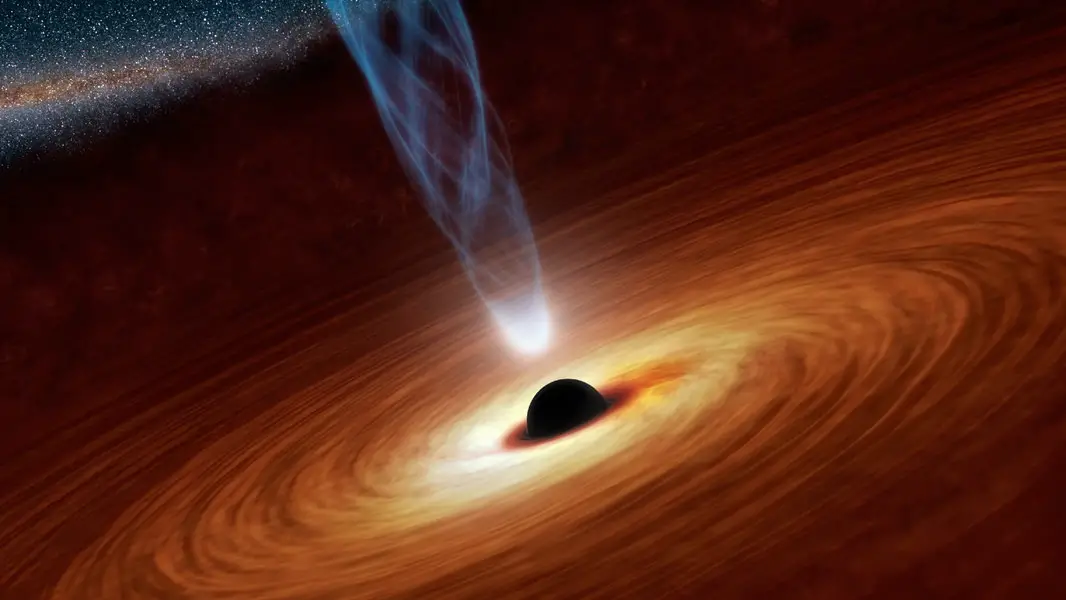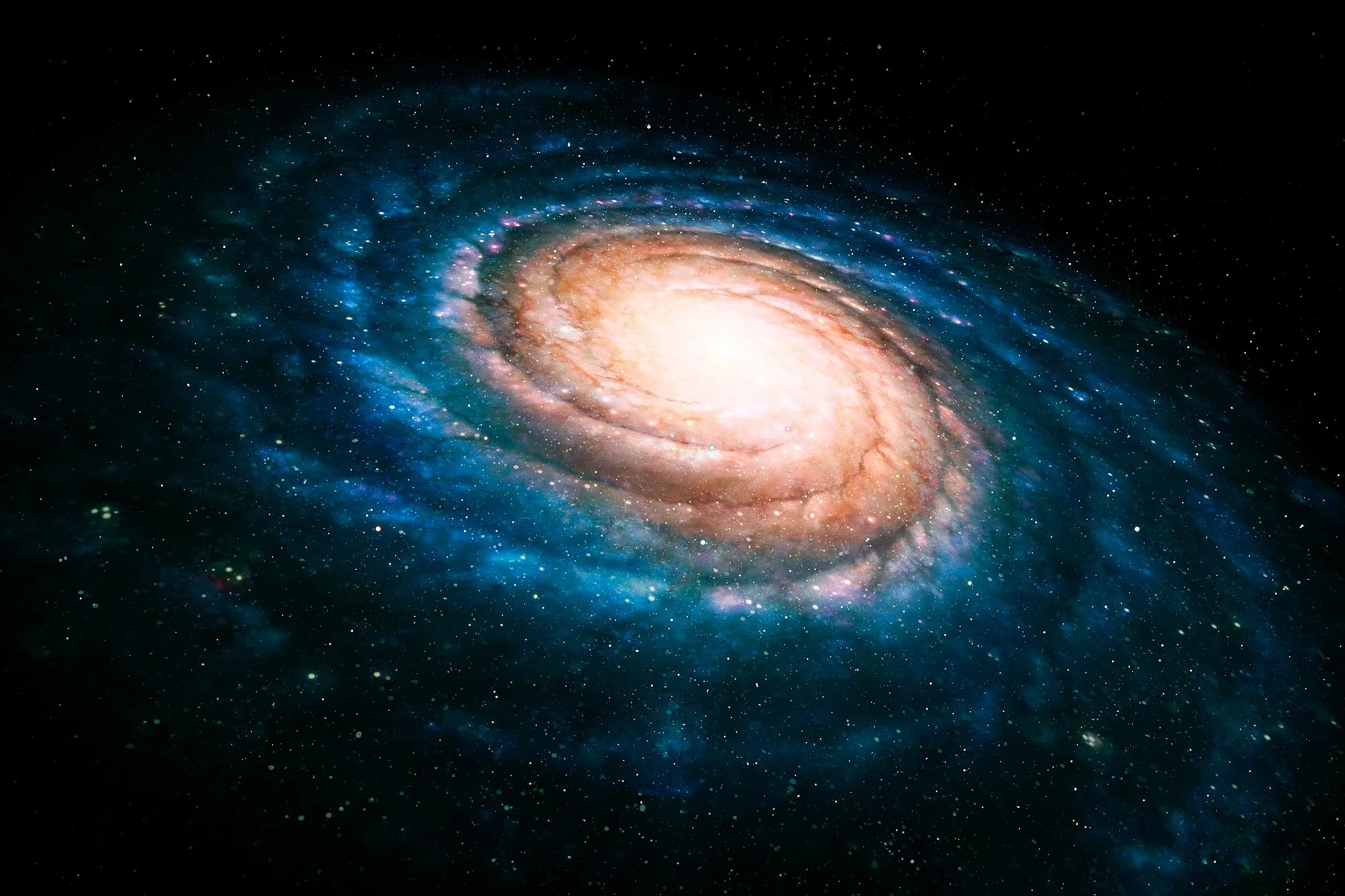PSR J1748-2446 spins 716 times per second—so fast, it nearly tears itself apart.
Key Takeaways:
- PSR J1748-2446 is the fastest-spinning neutron star ever discovered, rotating 716 times per second.
- It’s an extreme example of a neutron star—denser than lead by 50 trillion times and harder than a diamond.
- Its intense gravity flattens anything on its surface to a layer just one atom thick.
- The star’s rapid flashes resemble a cosmic lighthouse, appearing steady due to their ultra-high frequency.
- Located in the Terzan 5 cluster 18,000 light-years away, it orbits a low-mass giant star every 26 hours.
___________
PSR J1748-2446 is no ordinary star—it’s the fastest-spinning neutron star ever observed, rotating an astonishing 716 times per second. If it spun any faster, it would tear itself apart. Located 18,000 light-years away in the globular cluster Terzan 5, this remarkable pulsar challenges our understanding of extreme astrophysics.

A Star of Extremes
A neutron star forms when a massive star collapses under its own gravity, compressing a few million Earths’ worth of material into a sphere just 20 miles (30 km) wide. The result is an ultra-dense celestial object with gravity billions of times stronger than Earth’s. PSR J1748-2446 takes this to an extreme: its density is 50 trillion times greater than lead, and its surface is harder than a diamond.
This pulsar also boasts an incredibly strong magnetic field—one trillion times more intense than our Sun’s. As it spins, it releases pulses of radiation at ultra-high frequencies, creating a lighthouse effect. First detected in 2004 by Jason Hessels at McGill University, its rapid flashes are 30 times faster than those of a movie projector, making them appear as steady light to the human eye.
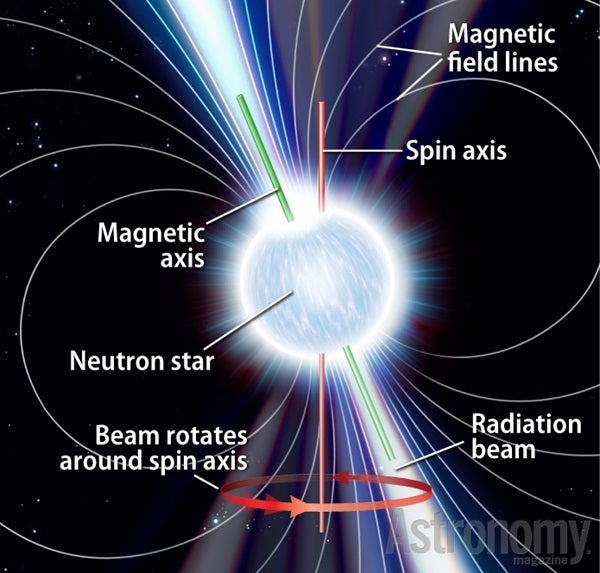
A Binary Star with a Strange Companion
Adding to its strangeness, PSR J1748-2446 is part of a binary system. It orbits a swollen giant star that, despite being much larger, contains only one-seventh the mass of our Sun. The two stars complete a perfectly circular orbit every 26 hours, and the giant star blocks 40% of the pulsar’s light once per orbit, creating a precise dimming pattern.
Scientists believe that the pulsar’s extreme rotation speed is due to its companion. As the giant star sheds material, the pulsar captures it, increasing its spin rate over time. This process, known as “recycling,” is why PSR J1748-2446 rotates so quickly.
Despite past claims of even denser objects, such as “quark stars,” the scientific community has dismissed such findings, leaving PSR J1748-2446 as the reigning champion of extreme neutron stars.
As astronomers continue studying this record-breaking pulsar, it offers valuable insights into the nature of collapsed stars, extreme physics, and the dynamics of binary systems in dense star clusters.
